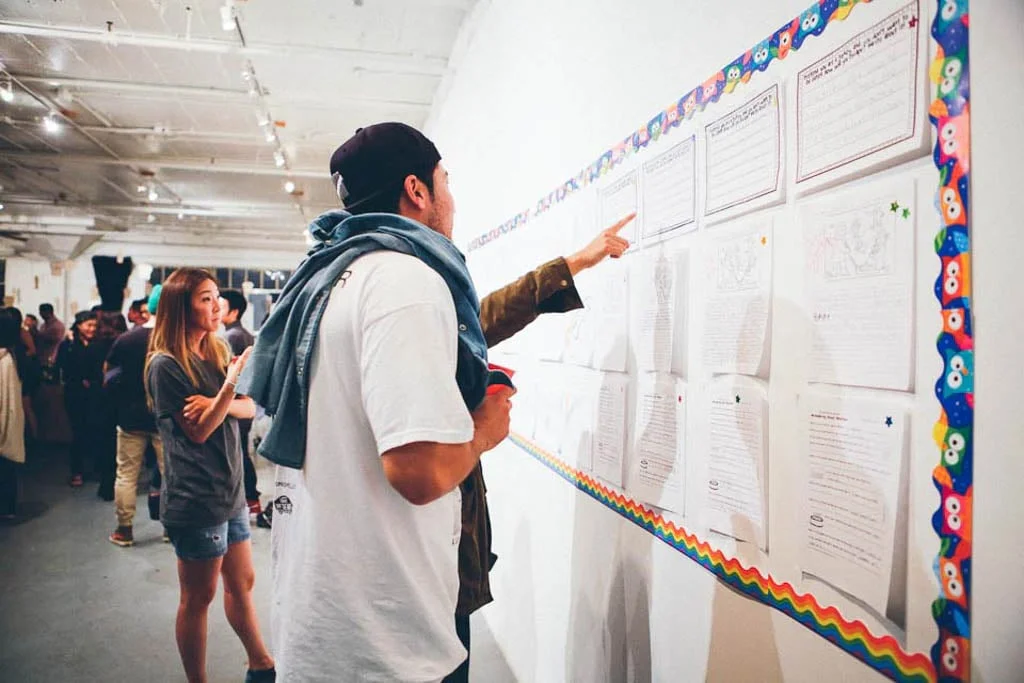Mongster : Identity / Creative Direction / Product / Storytelling / Writing
I decided to write a short book for adults and children alike in an easy, short, but powerful format.
To create the book, I collaborated with Illustrator Audrey Lee to bring Mongster to life.
To help promote the book, I reached out to some of my favorite online publications and got a chance to be interviewed.
I wanted a platform for the process and reason for making my book, so I threw an event and invited my peers, friends, and family.
His skin wet from natural slime, as he wriggles to find his spot to sleep.
The walk back home was a brutal one. The faces of petrified children fills each of his four eyes, as tears begin to weigh them heavy. He is sad. He was sure that the book he found during a whole day of digging through trash would help him be one of them. But he was wrong. If only they would give him the chance. If only he could show them.
But when you look like the biggest monster in the whole wide world,
proving everyone different can be the hardest thing.
bye–Benjamin Chi
From my interview with the Hundreds. Catch the full article here
How did you go from marketing at Crooks & Castles to writing your first children’s book?
Chi: I’ve always enjoyed writing my fair share of Xanga entries and Facebook status rants. I wrote this book three and a half years ago, and it’s just been sitting as a private entry on my blog. The experience from Crooks & Castles really gave me insight on how to put this thing together, not just as a book, but as a package with a reading event, exhibit, pins, and a website.
What—or who—inspired you to write Mongster?
Chi: Like a lot of things artistic, I wrote the book during a dark time in my life. I had gotten out of a pretty unhealthy relationship, quit my job, and was going through a very tough time while exploring who I really was as a person. I was in regret, basking in feelings caused by the consequences of my actions, which made me feel like a Mongster.
Who is Mongster?
Chi: Mongster is a teal, slimy-skinned creature who lives inside of a recycling bin. His only wish is to be normal like the kids he sees so often, but because of his looks it makes it nearly impossible for him to be accepted. His biggest struggle is his inability to be content with who he is because of the label the other kids have placed for him. It was important for me to depict this in Mongster because we live in a time where people are so concerned about and submerged into other people’s lives. It’s hard to step outside of the box you’ve placed for yourself, but oftentimes harder to rid yourself from the box and label others have placed on you.
Was a children’s book always a goal you had in mind?
Chi: No. It’s funny because after I told people about Mongster, they started to confess to me how writing a children’s book was always something that they wanted to do. I’ve started a few adult books but never got around to finishing them. I’m guessing it has something to do with the length.
Is the book intended for children and adults?
Chi: I would like to think that Mongster is an all-ages book. The format, words, and illustrations are simple enough for a kid to understand, but the depth of what you can take away varies from you experiences in life so the younger you are, the more simple your interpretation of the book will be while someone older may have a more complex interpretation.
What were some of your favorite children’s books growing up and why?
Chi: I went to elementary school in Korea and came back to the States when I was in the third grade, so I missed out on a lot of the childhood essentials. But from the little I have read, I liked Sesame Street books, Corduroy, and the Frog and Toad books. As I got a little older I really liked all of Judy Blume’s Fudge books, There’s a Boy in a Girl’s Bathroom by Louis Sachar, and nothing in this world will ever be better than Harry Potter to me. Ever.
How did the collaboration with Audrey come about?
Chi: I met Audrey through her boyfriend during an event where she was displaying her work. I immediately fell in love with her talent and didn’t want anyone else for Mongster, although it didn’t happen until some years later. Her style and detail to color is what really brought interest to her work, and Mongster is proof that I made the right decision.
How is Mongster different from other children’s books? Or similar?
Chi: Mongster is different from other children’s books because it doesn’t have a happy ending (spoiler alert) and to me, that’s okay. You learn some of life’s most important lessons in difficult times and this book is to help you avoid situations where you can feel that way or make someone else feel that way.

























